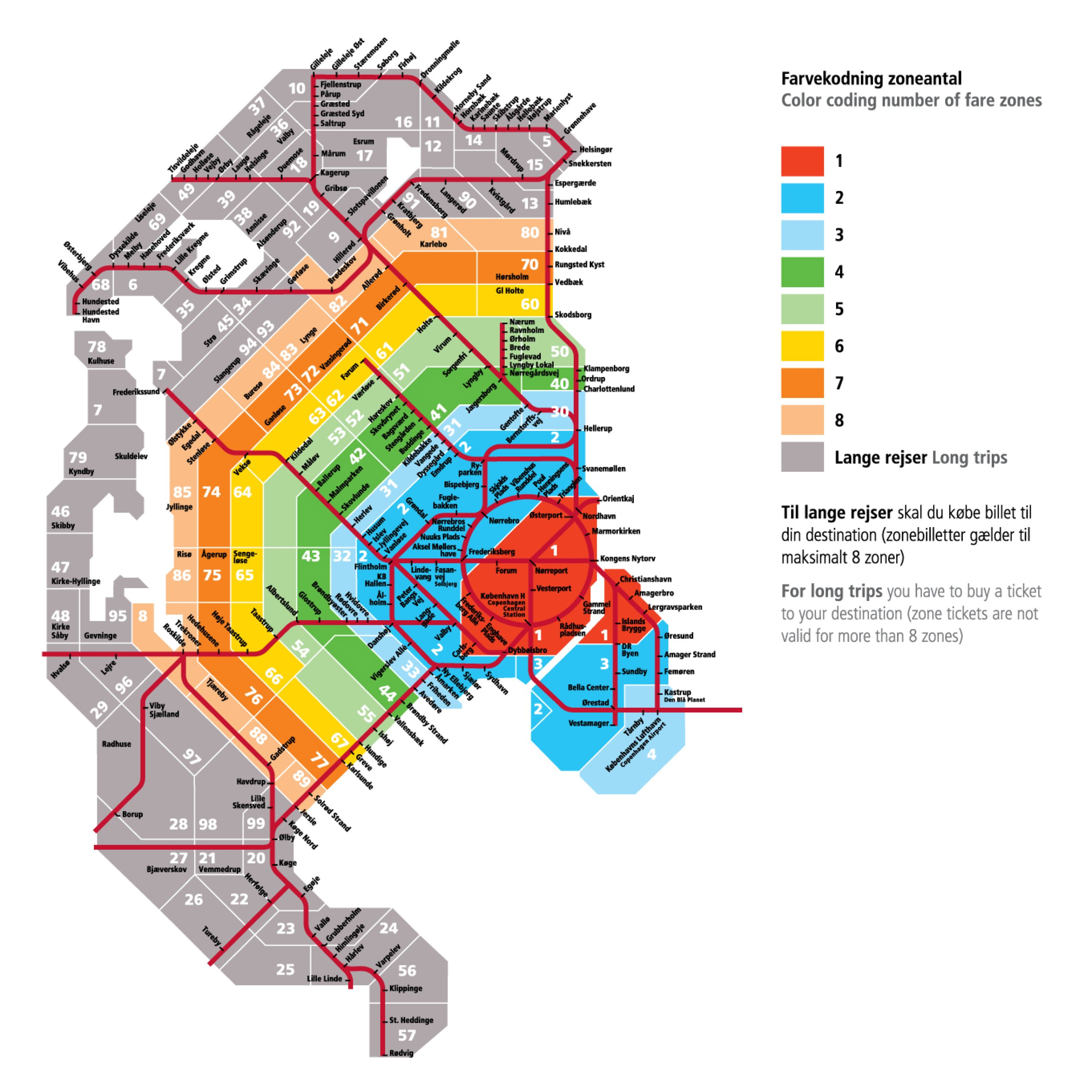Copenhagen and its Public Transportation System
The public transport system in the Danish city of Copenhagen is quite extensive, with a bus, train and metro network. The metro system, which is unique in that it does not have a driver, runs along the eastern end of the city centre and connects Christianshavns Torv and Kongens Nytorv with Norreport. The metro system is currently being extended to the airport. The bus system, known as HUR, is extensive, while the S-train network has eleven lines that run through Kobenhavn H or the Central Station. The HUR system has its main terminus at Radhuspladsen, which is a few blocks north-east of the Central Station on the S-train network.
Copenhagen’s public transport system is considered one of the most reliable and efficient in the world. Although there is a lot of improvement and development work going on, the current system is still capable of getting you to your destination anywhere in the city.
Let us take a look at the various means of public transport in Copenhagen that make it so easy for tourists to get around the city without having to face any major hurdles in transit.
Public Transportation System Map
Map of Public Transportation System in Copenhagen showing different lines and stations. Click on the map to enlarge it or download the map in PDF format.
Copenhagen Metro
For a fast, safe and easy way to get around the city of Copenhagen, the Metro is the best option. In fact, it was voted the best metro service in the world in 2008 and 2010. The Metro service helps to connect the large urban areas at both ends of the city, with the city centre serving as a base. The two lines of the Copenhagen Metro make it possible to travel around the city at any time of the day. The transport system is fully automatic and driverless, with well-trained stewards and staff on board. The two main lines are
- Line M1: This is a bi-directional line that runs from Vanlose station in the west of Copenhagen down to the island of Amager, called Vestamager, which lies to the south of the city. With the largest of all Scandinavian shopping malls – Field’s – close by, the Orestad metro station is the busiest of all on this line.
- Line M2: Another bi-directional line, it runs between Vanlose Station and Copenhagen Airport. This metro line runs through the city centre, along places like the Christianshavns Canal and ends at the airport. There are many tourist attractions and venues along the route. With three zones along the route, it takes around twenty-six minutes to complete the journey.
- Line M3: The last line in the Copenhagen Metro project, it is expected to be completed in 2018 and will run up to thirty trains along the route.
Public Bus Service in Copenhagen
Copenhagen has as many as four hundred different routes that serve both its citizens and tourists to the Danish capital. There are two main bus terminals in the city, located at the City Hall Square and the Central Station, through which public buses run all year round on most of the famous and busy routes, taking tourists to some of the most popular destinations in and around the city of Copenhagen.
Copenhagen S-Train
The red S-train in Copenhagen, a distinctive feature of the city’s transport system, is one of the easiest ways to get around Copenhagen and most of North Zealand. There are also trains from the city to Klampenborg and Hillerod in the north, and to the western Danish town of Hoje-Tasstrup. While everything from children to pets are allowed on the train, bikes are not, especially at peak times.
Harbour bus in Copenhagen
The harbour buses, brightly coloured yellow and blue, are an excellent means of transport and a cheap alternative to Denmark’s popular canal cruises. To get to the Little Mermaid, across the harbour from the Royal Library, you have to pay the nominal price of a bus ride. Along the way you will pass scenic attractions such as the Royal Opera House, Nyhavn and Christianshavn.
Taxi Service in Copenhagen
Every taxi in Copenhagen has a registration number and the word Taxa or Taxi on its roof. If a vehicle is free, the word “Fri” will be displayed on the windscreen. Travelling by taxi is very convenient as the drivers speak good English and are committed to finding the cheapest and quickest way to your destination. Beware of the many pirate taxis in Copenhagen. It is best to avoid these vehicles as they lack proper insurance and other forms of legal protection.
Getting Around on bicycle in Copenhagen
The best offer: Copenhagen is considered one of the best cities for cycling. There are cycle lanes on most streets and, more importantly, their presence on the roads is respected by motorists. It is possible to cycle throughout the city, with the exception of pedestrian-only streets such as Stroget. Kongens Nytorv and Gammel Torv are the points where you can cross Stroget by bike. Keep an eye out for tourist buses and be careful of pedestrians who tend to step off the kerb carelessly.
Copenhagen Card
The Copenhagen Card, which is available online and at the city’s tourist information offices, gives you free entry to up to sixty museums in the city and other attractions in the surrounding area. What’s more, the card gives you free travel on Copenhagen’s bus, metro and S-train networks, as long as you’re travelling within the seven travel zones. So if you are planning to use the various means of public transport in Copenhagen, make sure you have the Copenhagen Card to make your travels easier and cheaper.
